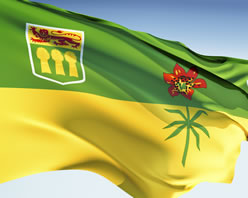Drug Fact Sheet: Marijuana
Today’s blog on marijuana looks at its origin story and its mental and physical effects. Marijuana is the dried leaves and flowers of the Cannabis sativa or Cannabis indica plant. The cannabis plant contains Tetrahydrocannabinol (THC) which is what gives people the high. There are many ways to consume marijuana including smoking using various paraphernalia, vaporizing, and eating it mixed into food like cookies. History Marijuana dates back at least 4000 years with references to it in ancient Chinese medical texts. It is believed to have spread from there to India, the Middle East, and then Europe about 1500 years ago. The Chinese used it to treat rheumatism, gout, and malaria. It seems it was mainly used recreationally in India and the Middle East. Hashish was developed in the Middle East and spread to North Africa. In the 1500s and 1600s Europeans brought the crop over to the Americas and hemp was relied upon until cotton overtook it in popularity in the early 1900s. In the 1900s, marijuana was still being used medicinally for ailments like rheumatism, pain, and nausea. However, in the 1930s, the US government began an image war against marijuana claiming it was “a powerful, addictive substance that would lead users into narcotics addiction”. In the decades following, it became intrinsically associated with college kids and hippies who flaunted its use against authority and politics of the time. The decades-long war on drugs is now largely regarded as a failure, and the US and Canada are now looking at decriminalization of marijuana. Effects Smoking marijuana delivers the drug quickly and effects come on within minutes. Eating takes longer for the drug to absorb, taking effect 30 to 60 minutes after consumption. THC can alter the user’s sense of time, body awareness, mood, and memory. Researchers believe they have found that teenagers who use marijuana heavily lose some brain function into adulthood. However, they have not noticed the same loss in adults who started using marijuana as adults. Some people who heavily use marijuana report having mild withdrawal symptoms like irritability, anxiety, and lack of sleep and appetite. There are no pharmacological responses for these symptoms, but various therapies have shown to be very effective. If you or a loved one is experiencing symptoms of overuse or withdrawal symptoms, please contact our specialist for help. References: Marijuana History Drug Facts: Marijuana Liberal Caucus Supports Decriminalization The post Drug Fact Sheet: Marijuana appeared first on Canada Drug...
Safe Injection Sites a Possibility for Waterloo Area
Safe injection sites are being considered in the Waterloo region following a public health supervised injection site feasibility study. By looking at how many people use needle syringe programs, it is estimated that 4000 people in the Waterloo region use injection drugs with almost half using daily. Kitchener and south Cambridge are earmarked as the ideal locations for safe injection sites as they had more opioid overdoses than other areas in the region. Study Results Officials who conducted the study spoke with 146 injection drug users in person and via an online community feedback survey, garnering 3500 responses. Results of the online survey are similar to others in that local stakeholders are concerned about the stigma a site could bring to the area. For this reason, more than one site is recommended, including an option for a mobile site. A mobile site has the potential to bridge the gap in understanding and acceptance. Of the injection drug users surveyed, 86% said they would use a safe injection site if it were available. Those who said they wouldn’t were concerned about their anonymity and privacy. Those who were pro-site said they appreciated the access to clean supplies, health care services, and less danger of overdose. This initial study is the first step in a long process to getting safe injection sites to the communities. Community feedback sessions will take place in March. Following these, the city council will decide in April whether or not to greenlight the second part of the study. This next part would assess where the best location(s) would be for potential sites. Safe Injection Sites Across Canada Safe injection sites are becoming more common across Canada. The first legal site in North America opened in 2003 in Vancouver to help alleviate the health issues for users living in the Downtown Eastside; now provincial governments are looking at wider implementation. In Alberta’s opioid crisis response plan, supervised consumption services are an integral part of their approach to harm reduction. They use the term consumption as it allows for all kinds of drug users to use safely onsite. Many studies have shown the effectiveness of these sites in decreasing the spread of communicable diseases and other health risks associated with injection drug use. Most importantly, there is a distinct decrease in loss of life. If you are looking for a safe injection site near you, please contact our specialist for more information. References: CBC: Region looks at 3 locations for supervised drug injection sites VCH: Supervised Injection Sites Alberta Government: Supervised Consumption Services The post Safe Injection Sites a Possibility for Waterloo Area appeared first on Canada Drug...
Self Harm Awareness Month
March is self harm awareness month in Canada, the USA, and Britain. “Self-injury is any deliberate, non suicidal behaviour that inflicts physical harm on your body and is aimed at relieving emotional distress.” Life Signs UK chose to use the term self-injury as it is more specific to the act of injuring oneself. The term self harm which can be viewed as a larger combination of behaviours that cause a person damage. For this blog we will use the term self harm as we will be looking at some of those other behaviours. Why do some people self harm? Some people self harm to deal with emotional pain that has become too great to bear. Others use it is a way to experience some kind of sensation when they have become numb to their surroundings. It is also used a form of control when a person feels they have no control in other areas of their life. There are many reasons why people self harm, however it is often very misunderstood by people who don’t. This kind of coping mechanism can become a person’s default way to deal with their issues. Unfortunately this means self harm may increase in frequency and severity as it becomes more ingrained in someone’s daily life. Can self harm become an addiction? New reviews of studies state that there is evidence to suggest continued self harm behaviours can be considered a process addiction like shopping, sex, and gambling addictions. Characteristics of process addictions like tolerance, withdrawal, and relapse are seen in self harm processes. Since it is a coping mechanism for some, if no other coping mechanisms are developed it becomes a crutch that they can be unwilling to throw away. Self harm can also become a form of addiction as it a physical release/high that the person begins to crave. Treatment There is also a slight correlation between self harm and substance use. An Oxford study found that 8.7% of people who engaged in self harm also excessively used substances, sometimes using said substance for the purpose of self harming. Self harm does not spring out of a vacuum, and there is always an underlying reason for continued self harm. One of the prevailing theories is that trauma in childhood contributes to this behaviour, so some kind of therapy or counseling is a good first step for recovery. Looking at self harm as a process addiction is important because it has ramifications for therapy. Process addiction therapy models could now be used to help treat those with self harm behaviours. If you or a loved one is struggling with self harm, please contact our specialist to find treatment close by. References: Life Signs UK – What is Self Injury The Addictive Model of Self-Harming (Non-suicidal and Suicidal) Behaviour Cutting and Self Harm The post Self Harm Awareness Month appeared first on Canada Drug...
National Eating Disorder Awareness Week
February 26 to March 4 is National Eating Disorder Awareness Week in Canada. The National Eating Disorder Information Centre (NEDIC) is a great resource for Canadians looking for treatment for themselves or for a loved one. It has easy to understand information that goes into more detail about what constitutes an eating disorder. Canada Drug Rehab has listings of private practice therapists as well as residential treatment facilities that focus on eating disorders. Today’s blog looks at what an eating disorder is, why body image in children needs to be monitored, and treatment options. How do you know if you have an eating disorder? Similar to substance addictions, if your thoughts, feelings, and subsequent actions in regards to food, weight, and/or body image are overtaking other areas of your life then you may have disordered eating. Anorexia nervosa and bulimia nervosa are the more well known eating disorders, but there is a wider range. Signs and symptoms of anorexia include: food restriction, intense exercise, strong fear of gaining weight, and a very distorted body image. Signs and symptoms of bulimia are similar but the key difference is that after a period of food restriction, the person binge eats and then attempts to purge their body of these unwanted calories. Children and eating disorders The mental and physical toll of eating disorders is great. If an eating disorder appears in childhood it can seriously damage the child’s mental and physical growth development. Young girls and boys are now at risk of developing an eating disorder at rates not seen in the past. A 2002 survey reported almost 30% of early high school girls engaged in weight loss strategies. 19% of children who were deemed normal weight according to their BMIs still believed they were overweight. This is often attributed to the images portrayed in the media, and the mass availability of media and social media. Treatment Treatment varies person to person, but the conventional therapy ideology is that there are two kinds of issues that need to be addressed. The physiological issues such as the actual weight loss and the unhealthy actions around food and weight and body image. As well as the underlying psychological issues that lead to the eating disorder. Many private practice therapists specialise in eating disorders and this can often be enough to assist someone to recovery. However, there are residential treatment centres in some provinces that are eating disorder specific that you can access here. References: Understanding Statistics on Eating Disorders Clinical Definitions of Eating Disorders Understanding Treatment Options for Eating Disorders Eating Disorder Treatment Listings The post National Eating Disorder Awareness Week appeared first on Canada Drug...
Help Finding Public Drug and Alcohol Treatment in Alberta
This month, learn how to access public drug and alcohol treatment in Alberta in the next installment of Provincial Snapshot. Each month Canada Drug Rehab is outlining the steps you must take to access public drug and alcohol treatment in each province. If you read the blog on Alberta’s current mental health and addiction strategies, you will know that mental health and addiction are being brought under the same umbrella. Until that happens, the services are still split so you must access mental health care and substance use support in two different channels. This blog will detail how to access both kinds of care. If you or someone you know requires urgent help, please call 911. Drug and alcohol treatment in Alberta If you or a loved on has a substance addiction or any substance use concerns, find your nearest Alberta Health Services funded addiction office. Every major city and most large towns have an addiction office, they are often found in a provincial building. Most have a sobriety requirement. This means you may need to be 12 – 72 hours sober before visiting the office. These offices offer screening for addiction and mental health issues and can refer you on to the appropriate services like detox, outpatient, or inpatient rehabilitation. The outpatient programs are often available here and counselors can facilitate referrals to residential programs. Detox is available in major cities like Lethbridge, Medicine Hat, Grande Prairie, Fort MacMurray, Calgary, and Edmonton but many smaller towns do not have detox capabilities. Residential programs are usually 18-20 days long and despite being publicly funded be prepared to pay $40 a day for treatment. Mental health treatment in Alberta Alberta’s services are split, therefore the process for receiving substance use treatment is not the same as mental health care. If you or a loved one has mental health concerns you must first see your primary care provider. This can be a family doctor or walk in clinic. Describe your mental health symptoms to the physician so they can assess you for treatment. This physician can fill out and fax any referral documents to Access Mental Health (AMH). There is one AMH per health zone in Alberta. You can find which zone you are in here. AMH calls you and does an assessment over the phone so they can redirect you to the appropriate resources. They also help you understand and navigate the system and can facilitate referrals. Be aware, it can take a while from seeing your GP to when you start receiving treatment. If you need more help finding public drug and alcohol treatment in Alberta please email or call our specialist. References: AHS Zone Map Access Mental Health Addiction Services: Adult Detoxification Current Alberta Government Drug and Alcohol Treatment Strategies The post Help Finding Public Drug and Alcohol Treatment in Alberta appeared first on Canada Drug...
Help Finding Public Drug and Alcohol Treatment in Alberta
This month, learn how to access public drug and alcohol treatment in Alberta in the next installment of Provincial Snapshot. Each month Canada Drug Rehab is outlining the steps you must take to access public drug and alcohol treatment in each province. If you read the blog on Alberta’s current mental health and addiction strategies, you will know that mental health and addiction are being brought under the same umbrella. Until that happens, the services are still split so you must access mental health care and substance use support in two different channels. This blog will detail how to access both kinds of care. If you or someone you know requires urgent help, please call 911. Drug and alcohol treatment in Alberta If you or a loved on has a substance addiction or any substance use concerns, find your nearest Alberta Health Services funded addiction office. Every major city and most large towns have an addiction office, they are often found in a provincial building. Most have a sobriety requirement. This means you may need to be 12 – 72 hours sober before visiting the office. These offices offer screening for addiction and mental health issues and can refer you on to the appropriate services like detox, outpatient, or inpatient rehabilitation. The outpatient programs are often available here and counselors can facilitate referrals to residential programs. Detox is available in major cities like Lethbridge, Medicine Hat, Grande Prairie, Fort MacMurray, Calgary, and Edmonton but many smaller towns do not have detox capabilities. Residential programs are usually 18-20 days long and despite being publicly funded be prepared to pay $40 a day for treatment. Mental health treatment in Alberta Alberta’s services are split, therefore the process for receiving substance use treatment is not the same as mental health care. If you or a loved one has mental health concerns you must first see your primary care provider. This can be a family doctor or walk in clinic. Describe your mental health symptoms to the physician so they can assess you for treatment. This physician can fill out and fax any referral documents to Access Mental Health (AMH). There is one AMH per health zone in Alberta. You can find which zone you are in here. AMH calls you and does an assessment over the phone so they can redirect you to the appropriate resources. They also help you understand and navigate the system and can facilitate referrals. Be aware, it can take a while from seeing your GP to when you start receiving treatment. If you need more help finding public drug and alcohol treatment in Alberta please email or call our specialist. References: AHS Zone Map Access Mental Health Addiction Services: Adult Detoxification Current Alberta Government Drug and Alcohol Treatment Strategies The post Help Finding Public Drug and Alcohol Treatment in Alberta appeared first on Canada Drug...




